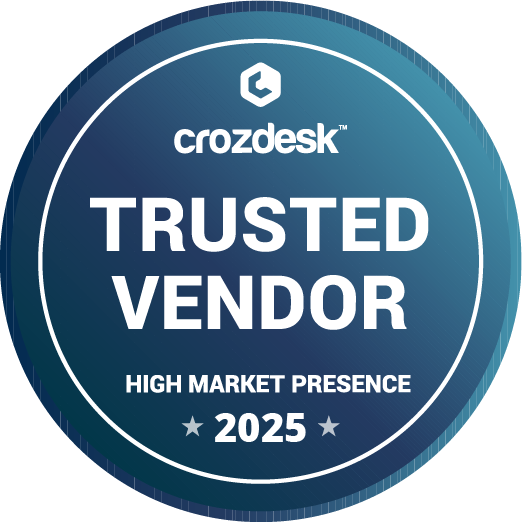
Finding the right metal enclosure requires a detailed understanding of various factors that affect its functionality, durability, and aesthetics. Metal enclosures are crucial for protecting electronic components from environmental threats, mechanical damage, and electromagnetic interference. With so many options available, it’s easy to feel overwhelmed. This guide will help clarify what you need to consider to make an informed choice.
Before beginning your search, outline your specific needs clearly. Understanding what your enclosure must protect, accommodate, and withstand is vital. Consider whether it will house sensitive electronics that require shielding from electromagnetic interference or if it needs to endure harsh environmental conditions. The intended application will influence both the design and material selection for your enclosure. The team from BUD Industries says that many manufacturers offer custom solutions that can meet niche requirements. Discussing your project’s details with suppliers can reveal possibilities that align closely with your needs.
A detailed conversation about your specific parameters may pave the way for discovering innovative solutions. When specifying your needs, consider dimensions, weight capacity, mounting options, and thermal management requirements. Each of these factors plays a significant role in how effectively your enclosure performs its purpose. Heat dissipation can be critical in high-powered setups—give this adequate consideration during the design phase.
Material Selection
Choosing the appropriate material is essential to the durability and longevity of your metal enclosure. Common options include aluminum, steel, and stainless steel, each offering distinct benefits. Aluminum is lightweight and resistant to corrosion, making it suitable for portable applications. Steel, particularly when treated, provides strength and durability, ideal for protecting equipment in industrial settings.
Stainless steel offers an excellent balance of strength and corrosion resistance, suitable for both indoor and outdoor applications. However, it’s typically heavier and more expensive than other materials. Different alloys exhibit different characteristics; therefore, understanding the specific environment and use case will help narrow down your choices.
Not only should you consider the corrosion resistance of the materials but their “finish” can also impact performance—whether anodized or powder-coated can affect durability and aesthetics as well.
Design Considerations
The design of your enclosure will significantly influence its functionality. Think about how accessible the internal components need to be and design for straightforward assembly and maintenance. Enclosures that require frequent access may benefit from features like removable panels or sliding drawers. Thermal management is another design aspect that shouldn’t be overlooked. When heat builds up inside an enclosure, it can lead to equipment failure.
Strategic placement of vents or fans may help in dissipating heat effectively. A well-designed enclosure not only protects but also ensures optimal performance of the housed electronics. It’s also essential to consider how the enclosure integrates into your existing systems or workflows. Space constraints and environmental factors can dictate design choices, so consider these from the very beginning.
Consider the materials used for the enclosure, as these will impact both durability and heat dissipation. Materials with high thermal conductivity, such as aluminum, can help draw heat away from sensitive components. On the other hand, selecting materials with resistance to corrosion and environmental damage ensures the enclosure will last in challenging environments.
If your system will be placed outdoors or in harsh conditions, ensure the enclosure is weatherproof and able to withstand extreme temperatures or moisture. A comprehensive design will not only focus on protecting the internal components but also allow for ease of use and long-term reliability.
Compliance and Certification
Many applications require compliance with specific industry standards or certifications, which could influence your material and design decisions. Whether it’s UL standards for safety in electrical enclosures or IP ratings for dust and water ingress, being aware of these requirements is crucial. Always verify that your chosen enclosure meets all necessary regulations applicable to your industry to avoid costly modifications later. Working with suppliers who are knowledgeable about compliance can greatly ease the process. They can guide you on the right choices and help you navigate through the maze of regulations.
It’s also important to stay updated on any changes in regulations. Standards can evolve, so keeping track of updates will help you remain in compliance and avoid penalties. Certification from recognized bodies not only ensures safety but can also improve the credibility of your product, making it more attractive to customers and partners. When designing for compliance, it’s essential to factor in both current and future needs, ensuring your design remains valid even as regulations shift.
Cost Considerations
Budget is often a crucial factor in selecting a metal enclosure. Balancing cost with quality and necessary features can be challenging. It’s essential to assess the total cost of ownership over the lifespan of the product, rather than just the initial purchase price. Cheaper materials and designs may save money upfront, but if they lead to premature failure or increased maintenance costs, they may not be a smart choice in the long run. Researching different vendors can help find a balance between cost and quality without compromising on your needs.
consider factors like energy efficiency, as enclosures that offer better insulation or thermal management can reduce operational costs over time. While the initial investment in high-quality materials may be higher, it can result in fewer repairs, less downtime, and lower maintenance costs, offering better value in the long term.
It’s also wise to factor in any potential hidden costs, such as shipping or installation fees, that might affect the total budget. Negotiating bulk purchases or long-term contracts with suppliers could also lead to cost savings, making the product more affordable without sacrificing performance.

Vendor Reputation and Support
Selecting a reliable vendor who offers robust customer support is a significant step in finding the right metal enclosure. Look for companies with a track record of quality products who provide ample guidance throughout selection to installation. Engaging with reviews and testimonials can offer insight into their reliability. Good customer service ensures you’ll have support during the installation and any potential troubleshooting down the line. Making an informed choice early can save time and headaches in future project stages.
Custom Solutions vs. Off-the-Shelf Options
Deciding whether to opt for custom metal enclosures or off-the-shelf solutions can greatly influence your project outcome. If your requirements are unique and cannot be fulfilled by standard products, customization may be the better route. Customized enclosures can add significant value by catering specifically to your needs.
On the contrary, off-the-shelf options can provide a quicker solution with lower costs. These choices come with a range of designs and materials that might suit many general applications without the need for extensive lead times. It is wise to evaluate both options based on your specific application, timeline, and budget limitations.
By addressing these considerations, you’ll be better equipped to choose the right metal enclosure that meets your specific needs and requirements.
Raghav is a talented content writer with a passion for creating informative and interesting articles. With a degree in English Literature, Raghav possesses an inquisitive mind and a thirst for learning. Raghav is a fact enthusiast who loves to unearth fascinating facts from a wide range of subjects. He firmly believes that learning is a lifelong journey and he is constantly seeking opportunities to increase his knowledge and discover new facts. So make sure to check out Raghav’s work for a wonderful reading.




